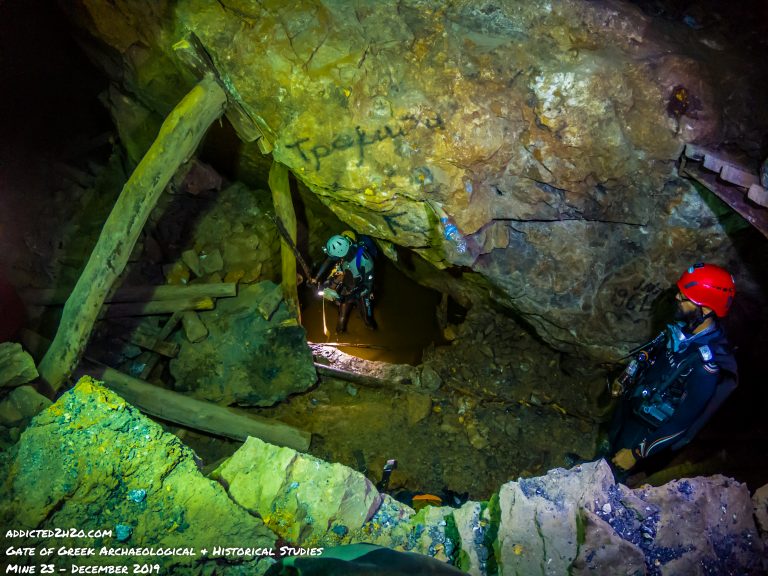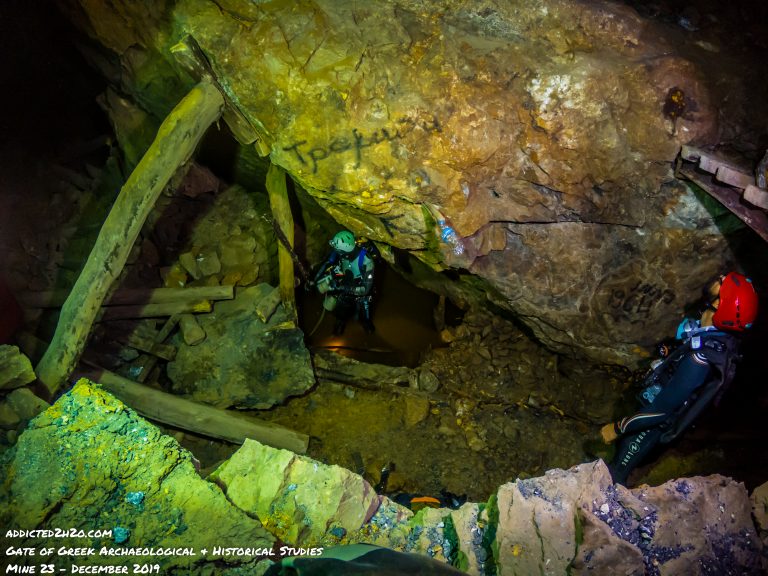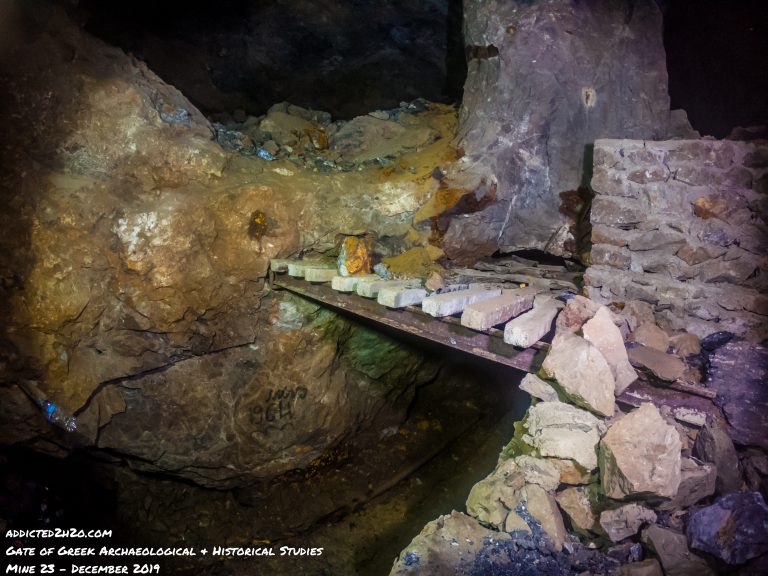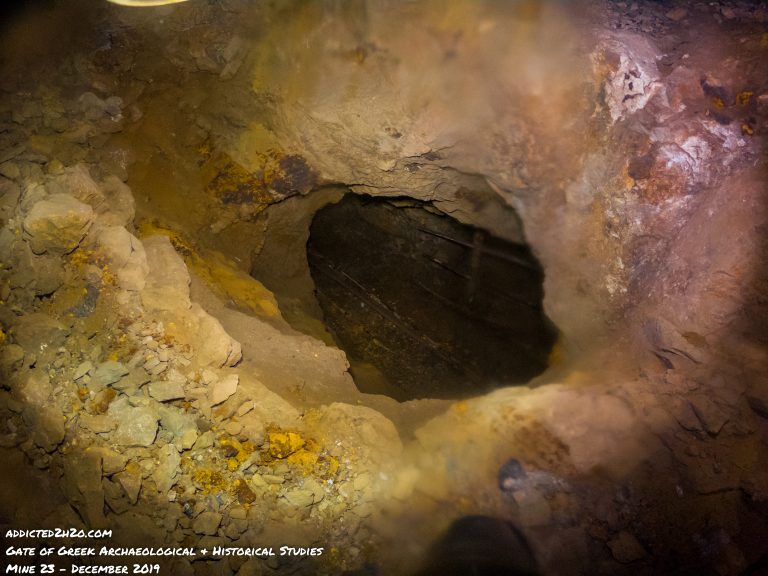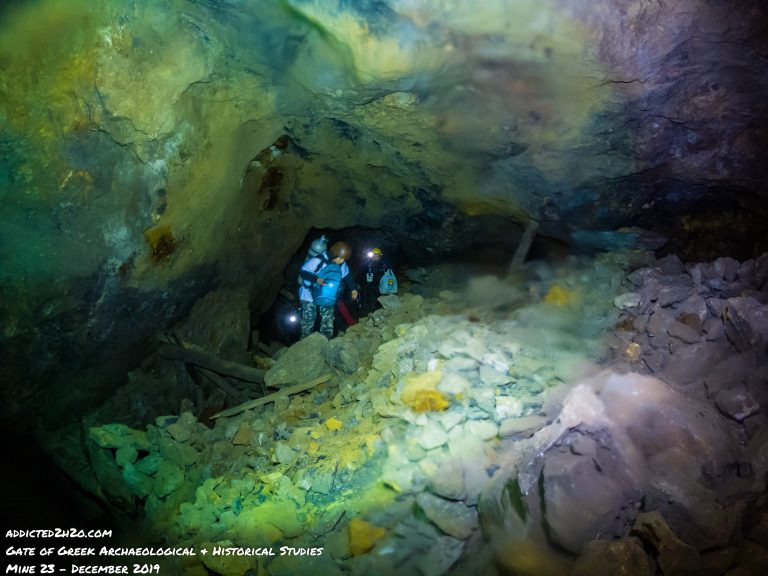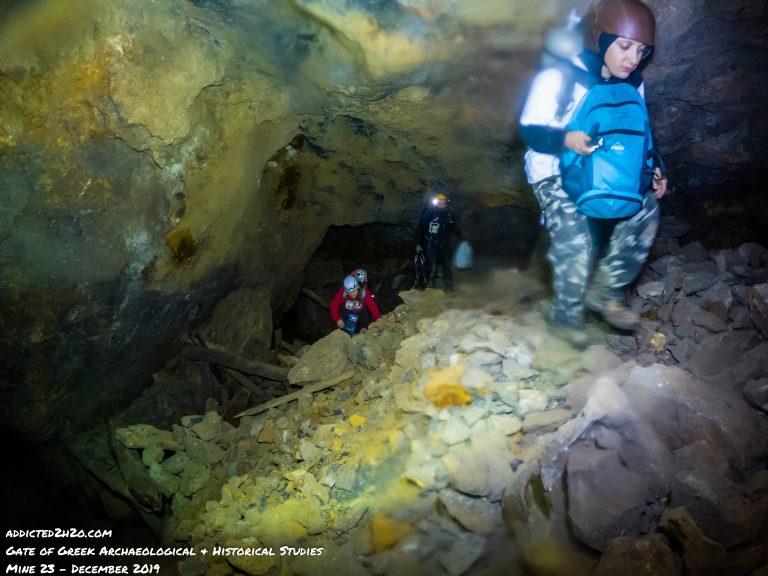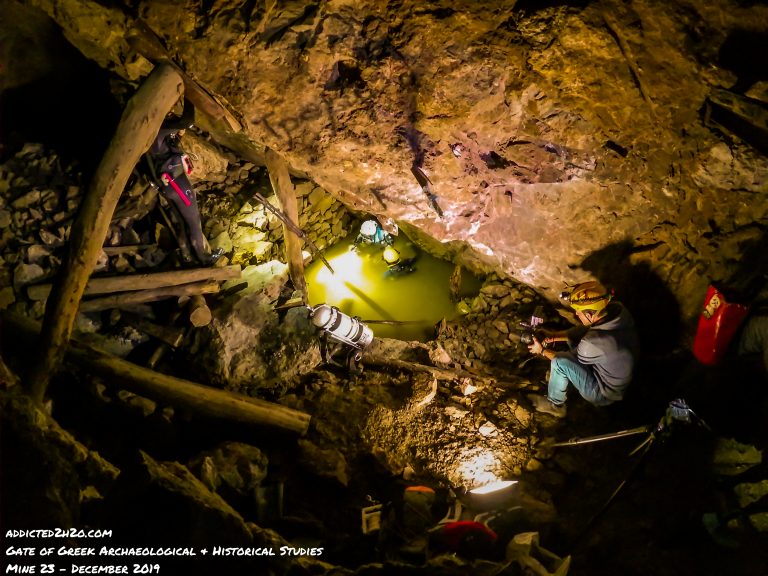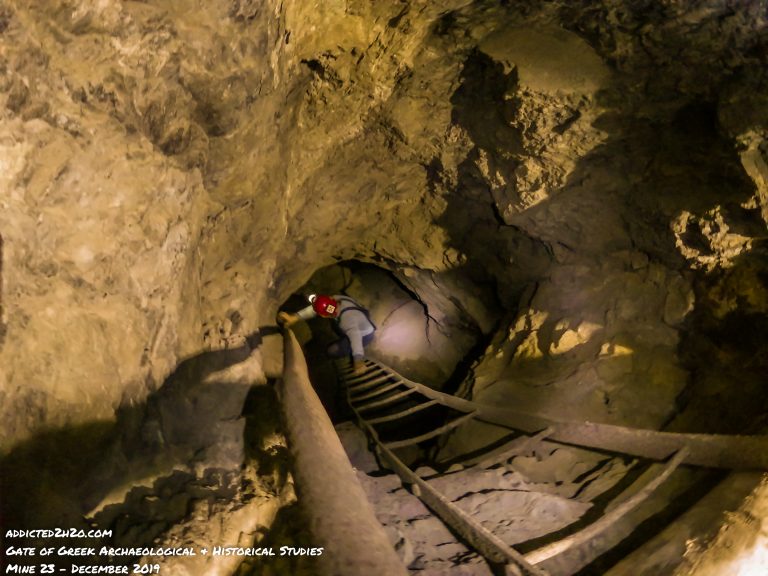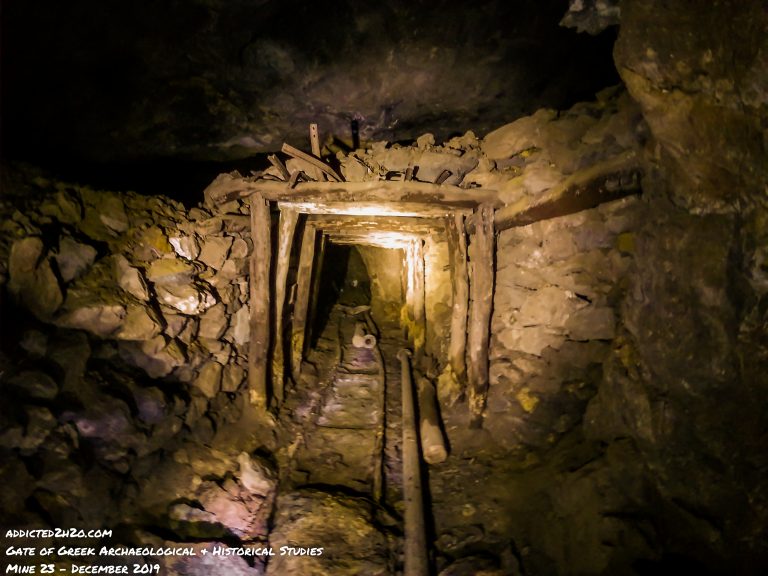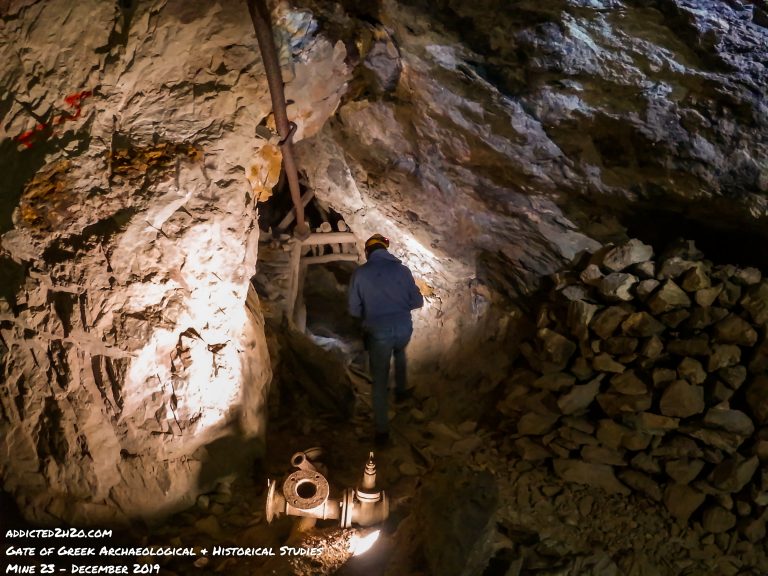Underwater Exploration
Mine 23
The area of Vilia a large part of land situated between Plaka and Dipseliza, close to the modern settlement of Plaka. The importance of the area for its ore had already aroused the interest of the ancient miners. In this area one could find oxidized deposits of lead, zinc and iron almost on the surface, which is why the area became an extensive mining center. The exploitation of the Vilia area was started by GEML (French Company) in the 1880s and proved quite profitable, bringing impressive quantities of high quality ore. Mine 23, which was an attraction for exploration by the addicted2h2o team and its members, forms part of the extensive gallery network of the Villia Plaka mine that joins with what is now known as the Mine 80. The Vilia mine was an important part of the mining activity in the area, as huge quantities of ore were transported to the surface from hundreds meters deep. The downside of the Vilia Mining Park was the long distance from the city of Lavrio and the railroad making it difficult to transport the raw material.
Mine 23 was opened in the early 20th century, as witnessed by numerous graffiti inscriptions found on the walls of the mine. For the team, this part of the mine was the most beautiful from an aesthetic point of view, as it preserves impressive rooms with wooden columns, stone walls to support the roof of the galleries and the creation of smaller storage areas by the staff. While in the dry part ore residues, cans from the workers last meals, ore transport baskets, rails, compressor pipes and metal stairs. In the first part of the mine, the team encountered iron door residues, oxidized (rotted) by moisture, which served as a protection to workers from the air stream formed in the arcades.
Upon descending 20-30 minutes into the heart of the mine whilst passing through semi-collapsed galleries, partially flooded sections and narrow passages, the main point of interest was reached. Mine Divers Erikos Kranidiotis and Stelios Stamatakis began their exploration to determine if the passage continued underwater. Due to the heavy sediment when the divers entered the water, it was impossible to conduct visual searches to determine the continuity of the flooded section from the surface. After laying a cave line and submerging, the divers descended about 7.5 meters, and determined the passage did not continue any further as it was blocked by rocks and other material. A small sloping passage was identified, which however, prevented further exploration due to rocks blocking this passage. The divers tried to cross this point, but it was impossible as the opening was barely enough to allow a divers arm or leg to pass through. Zero visibility conditions meant the divers had to feel their entire surroundings underwater by touch, to see if the passage continued until safely returning to the surface. The water temperature was 12 degrees Celsius, which was the lowest recorded out of the 6 mines explored by the team thus far.
Despite the difficulties in transporting the equipment, which is always a major issue, Mine 23 is characterized as moderate in terms of access difficulty compared to other mines the group has visited. The mine extends to many branches of multilevel galleries, extending to a large depth and several kilometers in length. Finally, it appears that many of the passages of the Vilia mine meet with others in the Plaka area, such as the central mine 80, which was opened much later in 1954-1956 in order to unite the northern arcades of Plaka and make the most of its rich deposits in metal.
The team was accompanied by two journalists, cameraman Thodoris Manousakis and journalist Maria Galati from the Time Machine TV program, to film a documentary on the history of Lavrio. They filmed part of the teams exploration and we thank them for this. Despite the team’s initial frustration the exploration will continue in order to locate any possible underwater galleries.
The Teams:
Addicted2h2o: https://addicted2h2o.com
GreekGate: https://www.facebook.com/PyleEllenikonArchaiologikonIstorikonSpoudon/
Sources:
-Lavrio Historical-Technological Cultural Park (www.Itp.ntua.gr/home_en)
-The Archaeological Guide of Thorikos (Ministry of Culture)
Historical Research:
Mary Fotiadi
Vasilis Stergiou
Support & Logistics:
Vasilis Stergiou
Mary Fotiadi
Apostolis Tzamalis
Kyriaki Foster
Mine Divers:
Erikos Kranidiotis
Stelios Stamatakis
Do what you can’t

